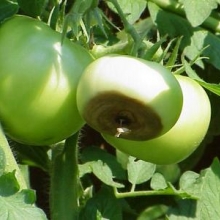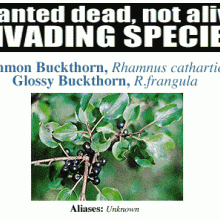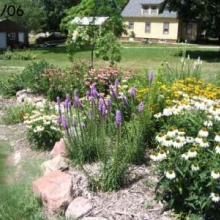Gardening Info
Blossom End Rot
Tuesday, July 5 | Gardening Info
Blossom end rot is one of the most common problems encountered in tomatoes and other fruits. As the fruit develops, a small, dark spot appears on the blossom end (usually the bottom). The spot eventually turns into a large, black lesion that can consume most of the fruit....
Read More...The War On Buckthorn
Monday, April 11 | Gardening Info
An Invasive Species: Introduced into the Upper-Midwest during the mid-1800s as an ornamental specimen plant, Buckthorn has become one of the most common invasive plant species in Minnesota. The common or European buckthorn and the glossy buckthorn reseed themselves so prolifically that they effectively choke out many native understory plant species. The dominance of buckthorn leads to a lack of wildlife diversity by limiting the types of available habitat and food sources. Removal of buckthorn allows the return of native plant species and the animals that depend on them. ...
Read More...Seed Starting Basics
Sunday, April 3 | Gardening Info
Starting your own plants from seed is a fun, cost effective way to get a jump on your gardening. Many unique hybrids and heirlooms are only available as seeds – starting your own opens up a whole new world of varieties....
Read More...Attracting Hummingbirds And Butterflies
Tuesday, March 15 | Gardening Info
Here are some tips for attracting and feeding these ‘flying flowers’ in your gardens:...
Read More...Plant A Rain Garden
Tuesday, March 15 | Gardening Info
About Rain Gardens: Rain gardens are areas designed to collect and return storm runoff to the water table in a controlled, natural manner. Run off is traditionally channeled into systems of drainage culverts and discharged into natural watersheds. Such sudden, large influxes of unfiltered run-off can have dramatic effects on the chemistry and, therefore, ecosystems of rivers and streams. Rain gardens help mitigate such negative effects by allowing run-off to be slowly drained through the ground where pollutants can be filtered out naturally. The roots of the plants that comprise the rain garden help make the soil more permeable to the water, help stabilize the soil and promote healthy ecosystems of microbes that break down contaminants found in the run-off. The foliage of the plants also helps return some of the water to the atmosphere in the form of water vapor....
Read More...



